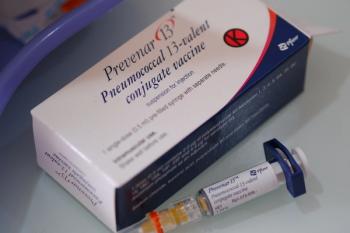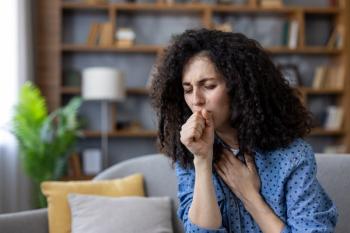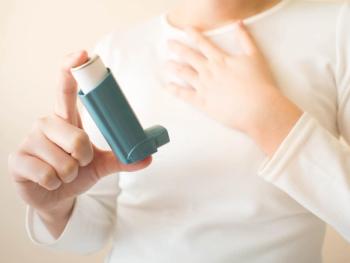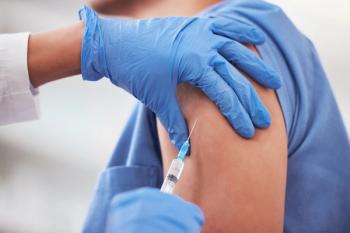
Baseline Respiratory Symptoms May Increase VTE Risk in Women
While baseline respiratory symptoms may increase the future risk of VTE in women, the study results did not find the same association in men.
Respiratory symptoms, such as chronic bronchitis, dry cough, or dyspnea at baseline, may be associated with an increased risk for future venous thromboembolism (VTE) in women, but not men, according to study results published in Thrombosis Update.1
While chronic obstructive pulmonary disease (COPD) may be a moderate risk factor for VTE, reasons behind this association are not well understood and may be multifactorial. To evaluate the incidence of VTE in people without COPD and other major VTE risk factors, a team of researchers in Sweden conducted a 44-year follow-up prospective cohort study assessing the correlation between lung function and respiratory symptoms and future VTE.
A health screening program conducted from 1974 to 1992 included spirometry test results and responses to a self-administered questionnaire about respiratory symptoms, including chronic bronchitis, phlegm, dry cough, dyspnea, environmental dyspnea (as in humid, dry, cold, warm, or foggy air), and physical activity dyspnea. In addition, lung function results were obtained and calculated as forced expiratory volume in 1s over forced vital capacity (FEV1/FVC) and divided into quartiles (Q1-Q4). Mean values of FEV1/FVC were calculated for each quartile.
Baseline characteristics were assessed in 20253 men (median age at baseline, 43.4 years) and 7361 women (median age at baseline, 47.7 years). The median follow-up time for patients was 36.5 years for men and 32 years for women. The mean FEV1/FVC ranged from 66.5% (Q1) to 88.1% (Q4) in men and from 69.5% (Q1) to 90.8% (Q4) in women (P <.001). Participants with lower FEV1/FVC values were typically older than those with better lung function. Additionally, Q1 contained more current smokers than Q4 and all 6 respiratory symptoms included in the questionnaire were more common in both men and women in Q1 than in Q4 (P <.01).
Of the cohort, 9.8% of men (n=1989) and 11.2% of women (n=822) were diagnosed with VTE in the 44-year follow-up. The incidence rate of first VTE was 2.65/1000 person-years in men and 3.23/1000 person-years in women. Results of a univariate analysis suggested that the risk of VTE increased in relation to the FEV1/FVC. The hazard ratios (HRs) for Q1, the poorest quartile, compared with Q4 were 1.46 in men and 1.27 in women. Trends were similar between FEV1 and VTE, with Q1 HRs of 1.89 and 1.45 for women and men, respectively. The association between FEV1/FVC and VTE was no longer significant following age adjustment, but remained with adjustments for height, BMI, and smoking status.
Except for phlegm, all other respiratory symptoms were associated with an increased risk of VTE in women in the univariate analyses. Dry cough, physical activity dyspnea, and chronic bronchitis were among the respiratory symptoms with the highest risks (HR; 1.61, 1.59, and 1.55, respectively). Following adjustments for age, BMI, height, smoking, varicose veins, and FEV1/FVC, chronic bronchitis (HR, 1.57), dry cough (HR, 1.48), dyspnea (HR, 1.41), and physical activity dyspnea (HR, 1.48) were still associated with an increased risk for VTE. These associations with VTE were not observed among men.
“Although several studies have found an association between COPD and VTE, only a few previous studies have tried to elucidate the effects of lung function on VTE in individuals without COPD,” the authors noted.
“The results of the present study indicate that respiratory symptoms and chronic bronchitis may be additional risk factors that should be considered in risk assessment, at least in women,” the investigators wrote. “However, further studies are needed to confirm the association and to study the clinical applicability of the results. Moreover, a generous use of spirometry might be beneficial, to identify individuals with poor lung function even if this was not an independent risk factor in the present study.”
Reference
1. Calling S, Nymberg P, Nymberg VM, et al. Lung function respiratory symptoms and incident venous thromboembolism during a 44-year follow-up. Thrombosis Update. Published online July 22, 2023. doi:1-.1-16/j.tru.2023.100145
Newsletter
Pharmacy practice is always changing. Stay ahead of the curve with the Drug Topics newsletter and get the latest drug information, industry trends, and patient care tips.
























































































































